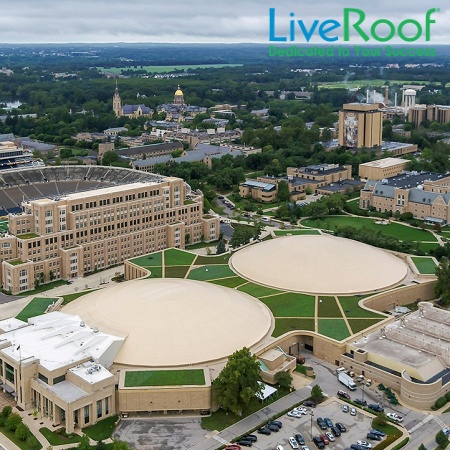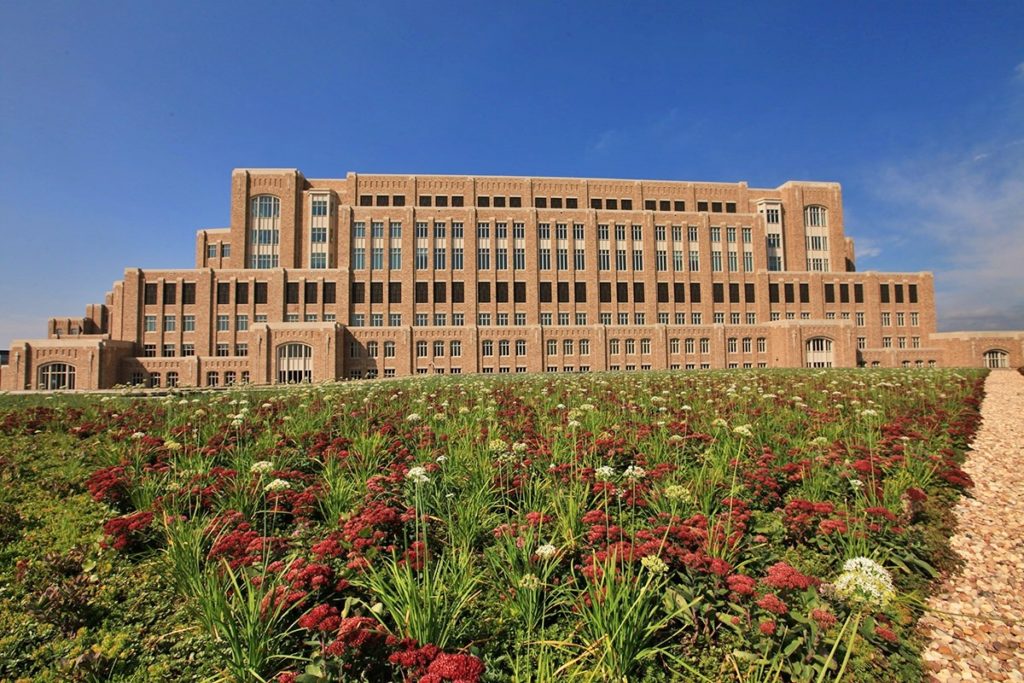During the 2022 annual meeting of a stormwater collective known as the Indiana MS4 Partnership, the University of Notre Dame received the New Municipal Best Management Practice Award for the Joyce Center Green Roof Project. Green roofs are part of Notre Dame’s sustainability strategy and overall goal of protecting and conserving our water, energy and natural resources. Green roofs provide many benefits to the environment, and mitigating stormwater runoff is one of them.
Totaling 79,096 square feet, the Joyce Center green roof project is the largest in Indiana and among any higher ed institution in the U.S. In addition to the Joyce Center green roof, the Duncan Student Center, Corbett Family Hall and O’Neill Hall are home to almost 43,000 square feet of green roof space collectively.
Installation of green roofs is one strategy in the University’s Comprehensive Sustainability Strategy to cut its carbon footprint in half by 2030, which University President Rev. John I. Jenkins, C.S.C., announced in September 2015 in response to Pope Francis’ encyclical Laudato Si’.
“In addition to saving energy and improving stormwater runoff, this green roof will also contribute to the natural beauty of our campus while replicating the design of our quads.”
John Affleck-Graves,
Executive Vice President
“The University is firmly committed to being a good steward of our natural resources,” said John Affleck-Graves, executive vice president. “In addition to saving energy and improving stormwater runoff, this green roof will also contribute to the natural beauty of our campus while replicating the design of our quads.”
The Joyce Center green roof was designed and grown by LiveRoof from Spring Lake, Michigan, and installed by Midland Engineering Company of South Bend. In total, 32,798 trays of plants form the design. The layout consists of 25 plant species, including 22 varieties of sedum. A rooftop irrigation system also was installed.
Green roofs provide immediate and long-term benefits to the structure and surrounding environment. They are proven to mitigate stormwater run-off, improve air quality by reducing carbon dioxide, provide noise insulation, naturally insulate to keep indoor temperatures lower during warm months and higher in cold months, and conserve rainwater for release back into the atmosphere.
A green roof also shields a roof surface from ultraviolet radiation, thus limiting the photo degradation of the roofing components. It is estimated that the Joyce Center green roof could extend the life expectancy of the existing roof membrane by 200 to 300 percent.
Notre Dame’s green roofs address the conservation of water, energy and other natural resources. By implementing green roofs, the University ensures that water sources are well-protected and naturally recharged.
Read more:
Largest roof greenscape in Indiana lives atop Notre Dame’s Joyce Center – Notre Dame News
 Greenroofs.comConnecting the Planet + Living Architecture
Greenroofs.comConnecting the Planet + Living Architecture





